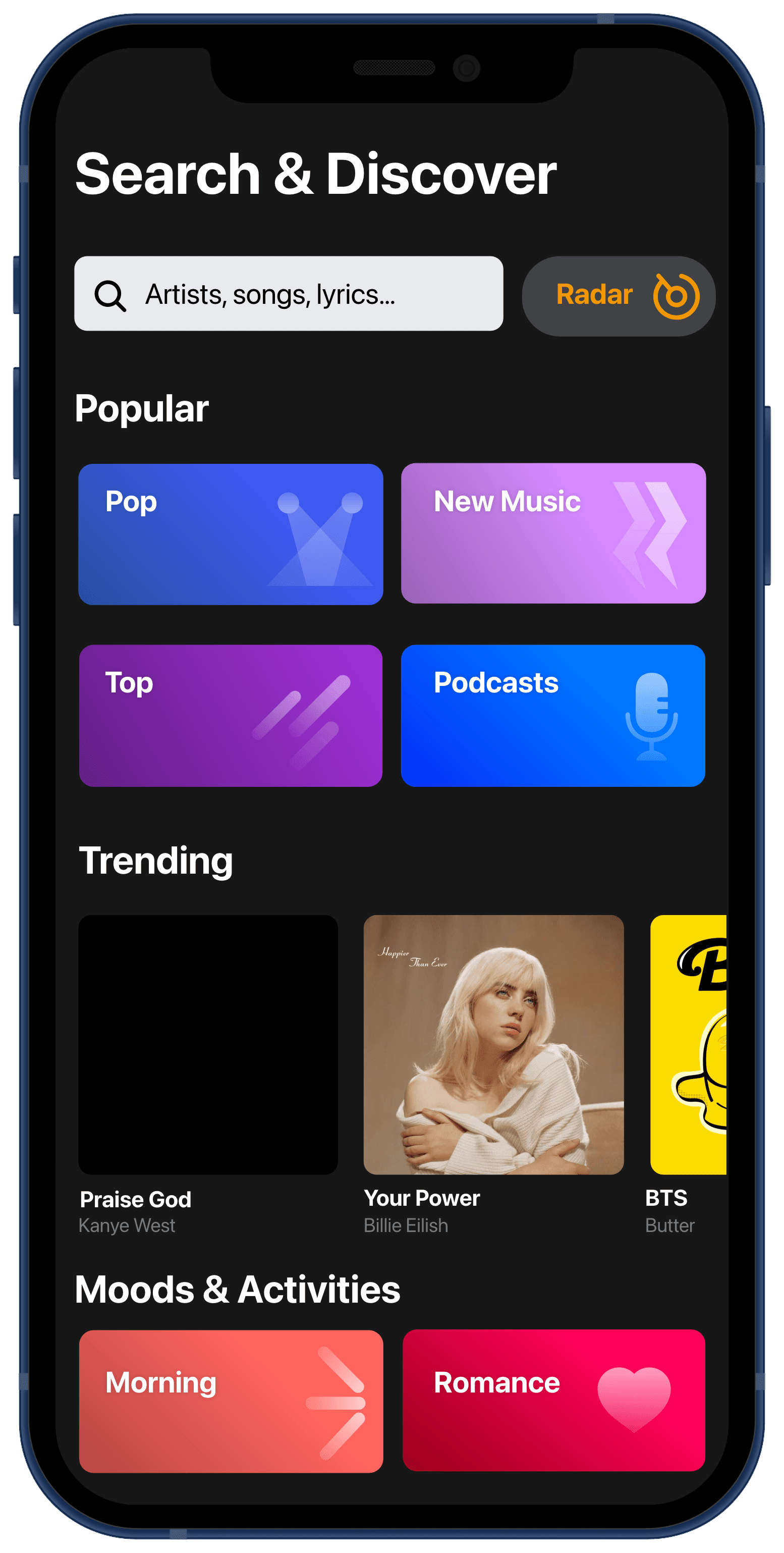Get Into the Groove of Product-Led Growth Through Data Democratization
Anghami learned the importance of data-driven work and decision-making with their adoption of Amplitude.
There’s no denying that information changes outcomes. Facts brought into the light of day affect everything from safety recommendations to educational research. That’s why increasing access to data throughout an organization can have dramatic results— it can even be transformative.
That has been the story at my company, Anghami. Anghami started in 2012 in Beirut as a streaming platform for the Middle East and North Africa (MENA) region. Today, our headquarters are in Abu Dhabi, UAE. We have more than 70 million registered users and over 57 million songs in our library, containing Arabic, English, and other international audio content.
When people across an organization start asking for data, you need to find a way to access that data easily. Click To Tweet
We’ve had many revelations since our inception. One of these was discovering the importance of data-driven work and decision-making. When people across an organization start asking for data, you need to find a way to access that data easily. To do that, Anghami adopted Amplitude.
Building trust and seeing value
I have a technical background and came to Anghami in 2015 as an engineer. It was an exciting time for a small music streaming company to grow into what would become a very crowded market. When I first joined, the company consisted of around 50 people. Within a year, we had doubled in size.
At the time I arrived, the product team had one product manager, and he owned Amplitude. As an engineer, I was initially reluctant to trust the solution. Every time we finished a project, the product lead would give us figures from Amplitude to see the impact of our efforts. But, being an engineer, you always question the results coming from non-engineers. My instinct was to dig into the raw data from the data warehouse and run different queries myself.
I grew out of that role—and that mindset—as I moved into more of a project management role, shifting slowly toward product until, eventually, I became VP of Product. As I grew into a more product-focused role, I started to see the full value of Amplitude.


I see now that if you ask a question in a data optimization system versus a raw data warehouse, you will get different answers because you’re asking different questions. Not only that, but I don’t have the time to perform raw data analysis for four hours every day just to prove how many people clicked a button. I can get that in three seconds in Amplitude, and also see where those users live and how they got to Anghami.
“I don’t have the time to perform raw data analysis for four hours every day just to prove how many people clicked a button. I can get that in three seconds in Amplitude, and also see where those users live and how they got to Anghami.”
It’s not just about time—some information is too complex and too large of a data set to store in our data warehouse, meaning we can only get this information in Amplitude. I spent a day validating Amplitude’s data flow, and when I show that to engineers, they trust it much more. The more I used Amplitude, the more I began to lean on the product to quickly identify trends and get answers.
How we use Amplitude across teams
As our company has grown, Amplitude has grown with us. Rather than being owned by one team, multiple teams access Amplitude for various data needs. Engineers come to me with product questions after seeing something in Amplitude. When mobile teams want to know information related to the adoption of their latest release, they simply go into Amplitude to see how many active users we have on each version.
The business teams are focused on product journeys. Let’s say we have a partnership that gives third-party users a 50% discount on Anghami Plus, our premium subscription. The business owner needs to understand how many users redeemed that promo code and the retention rate of those users versus our baseline. We run campaigns like this every couple of weeks and monitor them in Amplitude to further optimize the program.
Our performance marketing team examines the retention rates of users who came to us from campaigns on one social media platform versus another. Do we need to spend more on Facebook in Egypt or Snapchat in Saudi Arabia?
Our sales and commercial teams consider the retention rate from another angle: How is the figure influenced by the number of ads played on our free service? How might that drive users to our premium service? Pick an Anghami team, and you will find people using Amplitude to make more informed decisions.
The Amplitude feature I use the most is funnel analysis, which is so important because it tells us how many users who did X ended up also doing Y. For example, how many users who signed up ended up playing music? Building funnels with raw data is incredibly hard. It requires a lot of processing power and comparing different data sets. Other analytics solutions will perform funnel analysis, but it’s not at all intuitive. Amplitude makes funnels easy: select one event, then another event, and Amplitude shows you that conversion over time.
At the very top of our funnel is an important metric in our onboarding process: How many people saw the app and then registered for the service? We’ve made many changes across the years to improve that conversion, including eliminating any technical issues. From there, we decided to change the UI of our landing screen to see if that would make a difference. We began to put artist pictures on the login screen, enticing users with a preview of what’s inside. A few days after making that change, we looked in Amplitude and saw the conversion rate had improved by 5–6%.
Data democratization for better decision-making
Our leadership holds weekly business review meetings where they check on the current status of the business and make strategic plans. Today, nearly half of the numbers used in that meeting come from Amplitude. The meeting no longer consists of conversations about gut feelings and opinions. It’s now much easier to have conversations about the path forward because we base our discussions on facts. Amplitude is significant because it has allowed us to transform into a mentality of data-driven work and decision making.
It’s much easier to have conversations about the path forward when stakeholders base those discussions on facts. Click To Tweet
By expanding our use of Amplitude, we have democratized data inside our company. Everyone in your organization needs quick access to data to understand user behavior, trends, funnels, and retention—without the help of an engineer. If it requires an engineer, that’s not data democracy because the engineer owns everything. Amplitude decentralizes data access, allowing everyone to answer business, product, and technical questions with data. It means they can test and iterate faster, allowing us to scale better.
We can start with a question like, “How do we increase retention?” and work backward. Amplitude shows us we need to increase the number of users who play music on their first day. Then the question becomes, “How do we get them to play music on day zero?” We can see that the key is to get people to play music within their first hour of signing up. Going back to the funnel, we learn that we need the new user to pick not one, but more than three of their favorite artists when onboarding. Smaller and smaller details propagate into bigger and bigger metrics.
Get Into the Groove of Product-Led Growth Through Data Democratization Click To Tweet
Better visibility into our business
After years of using Amplitude, it’s gratifying to see they have thought of all of the details, and they work relentlessly to perfect their product. Especially in the last year, they’ve added many new features that I didn’t know I needed but are incredibly beneficial. For example, one feature shows me the first time a user performs a specific event. I never would’ve thought to ask for that feature, but I’m so happy to have that information. The Amplitude team uses the product themselves, which helps them determine what their customers want before they know it.
Amplitude has become the source of truth for trends, leading to increased adoption throughout Anghami. If we didn’t have Amplitude, we would have to use significantly more time and resources for data analysis from dedicated data scientists, which would stop us from achieving product-led growth. For my product team specifically, Amplitude gives us deep visibility into the business and how our decisions influence customer behavior. Ultimately, that leads us to create a better product.
Learn more about Amplitude and Product Analytics by downloading our free Dummies Book today!

Mohammed Ogaily
VP of Product, Anghami
Mohammed Ogaily is the VP of Product at Anghami. He is passionate about building user centric and data driven products.
More from Mohammed





